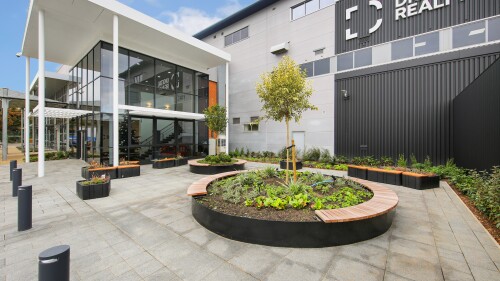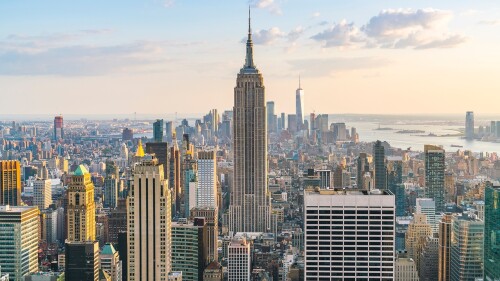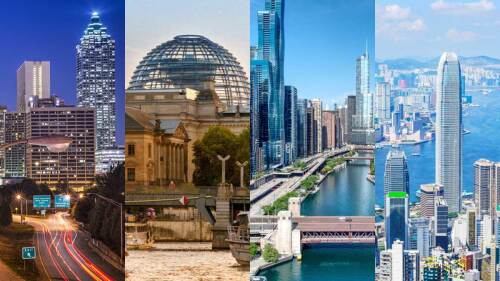At its core, New York City is one of the most walkable places on Earth. However, outside of Manhattan, the rest of the New York metro area is not so easily traversed on foot.
“The New York City region is a lot less walkable than we thought,” said Michael Rodriguez, director of research at the Center for Real Estate and Urban Analysis at George Washington University. He is also the coauthor of The WalkUP Wake-Up Call: New York, the latest report from the center, along with ULI member Christopher Leinberger and Tracy Loh.
The report measured what it called “walkable urban places” or WalkUPs in the metropolitan area around New York City, including parts of Connecticut, New York, and New Jersey. It turns out that the vast majority of the New York metro area is not very walkable—even compared with other U.S. cities, like Boston; Washington, D.C.; or even newer cities like Atlanta.
That came as a big surprise to researchers. “I thought the headline was going to be that the tristate region is very walkable and outpacing other cities,” said Rodriguez.
Outside of Manhattan, It’s Hard to Walk New York
To be clear, the urban core of New York City is one of the most walkable places in the country. A pedestrian who walks a half-mile (0.8 km) almost anywhere in Manhattan will pass a tremendous variety of shops, restaurants, and transit options. Largely because of that urban core, the tristate region has more walkable areas than any other place in the United States.
But outside of New York’s urban core, there are relatively few places where it makes sense to try to get around on foot—just 2.4 percent of the land in the New York metro region. The researchers identified these walkable, urban places (walkUPs) by studying “walk score” data gathered by WalkScore.com.
Instead, the larger metro area is largely difficult to traverse on foot, but has a smattering of small enclaves of walkability—like a small, suburban downtown centered on a commuter railroad station. Other hubs are served by bus. The study counts 149 walkUPs in the metro area.
The Value of Walkability
The total volume of New York’s walkable urban real estate, as mentioned previously, represents just 2.4 percent of the land in the metro area. But these areas are home to 42 percent of the population, 31 percent of regional real estate square footage, and responsible for 56 percent of the area’s gross regional product.
These walkable areas are also extremely valuable. Land is extremely expensive in the New York City metro area. The built real estate in the tristate area is worth a total of $6 trillion. In many ways, the high value of land around New York City shows the market value of walkable, urban real estate. More than half of that $6 trillion value—53 percent—is squeezed onto the land that the report designates “walkable urban.”
Developers have responded to the value of walkable urban places with plans to create new developments across the country that are more friendly to pedestrians. “If you take a place that is not currently walkable and make it more walkable, there is more value to that real estate,” said Rodriguez.
However, the high property values around New York can sometimes make it difficult for developers to build these new walkable places to fill the demand. It simply costs more in the New York area to assemble a site.
In contrast, land is relatively inexpensive in newer cities like Atlanta. Redevelopments have added new mixed-use developments in areas like Buckhead and Lenox, creating neighborhoods where it is relatively easy to walk from a new apartment to restaurants or grocery stores or to buses or light rail.
Also, in addition to the challenge posed by land prices, large parts of the New York area were built out during the 20th century—when the latest thinking and the real estate market of the time valued real estate served by automobiles. The outsized wealth of the New York metro area provided resources to create massive infrastructure projects like highways that cut through the metro area. New York was also home to a few outsized personalities like Robert Moses who carved this antiurban thinking deep into the landscape.
In contrast, much more of the land in metro areas like Boston or Atlanta is walkable. It is not quite as complicated and expensive in smaller cities like these to assemble the parcels of land necessary to build a new neighborhood in response to the new demand for walkable, urban places.
New York City may also be slow to create new walkable, urban places because during the era of urban decline, so much of the metro area defined itself in opposition to the urban core.
“A lot of the identity of the area was in reaction to New York City, by people who have this consciousness of the urban model being negative,” said Rodriguez. “You get a lot of talk about how ‘We don’t want to be New York City.’”
The report identifies several areas where new walkable urban places could form in the New York metro area if builders are able to assemble sites and overcome local resistance to new development. “Local communities should not be scared,” he said. “They all had it. Small towns were walkable urban developments.”





